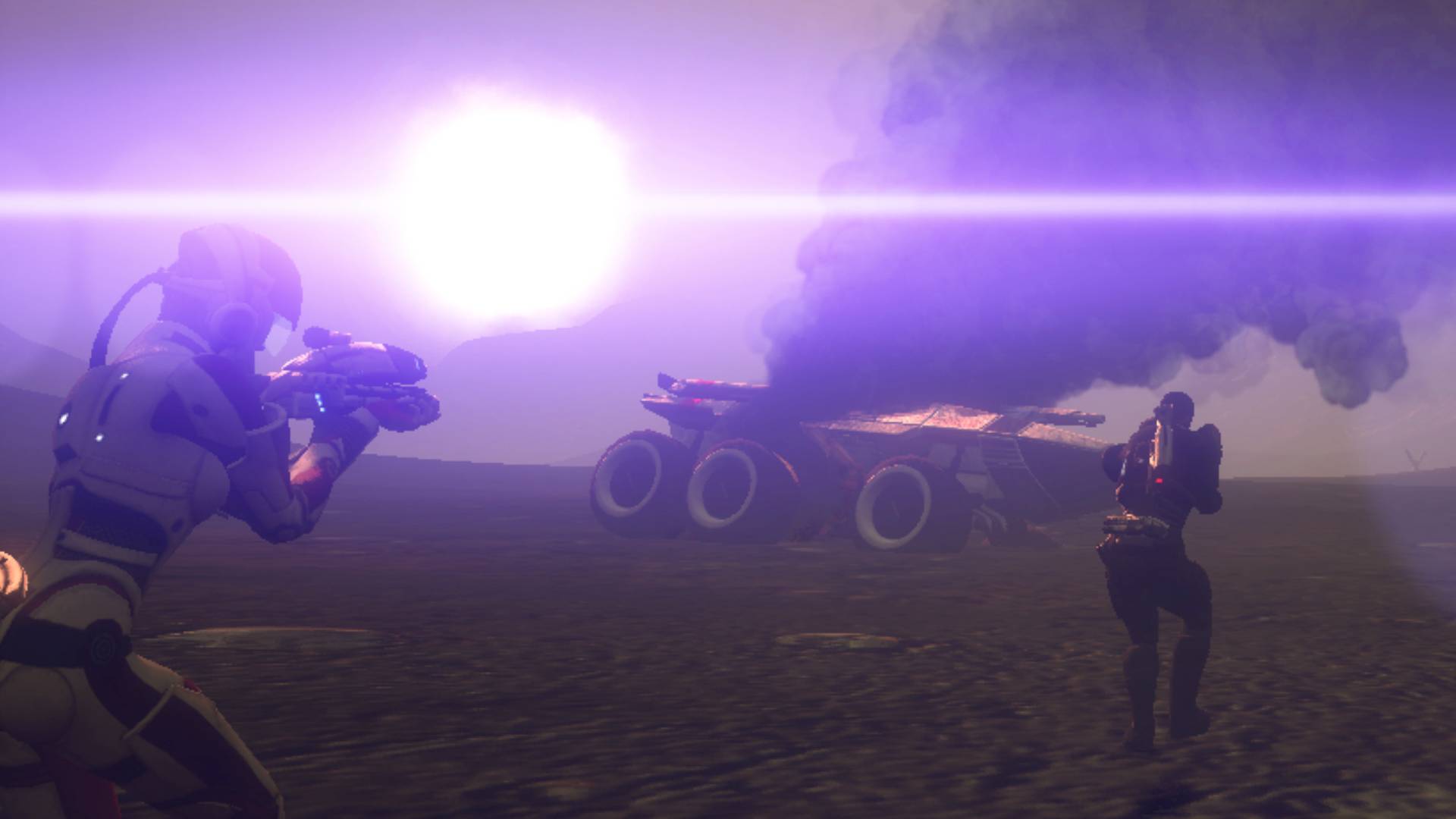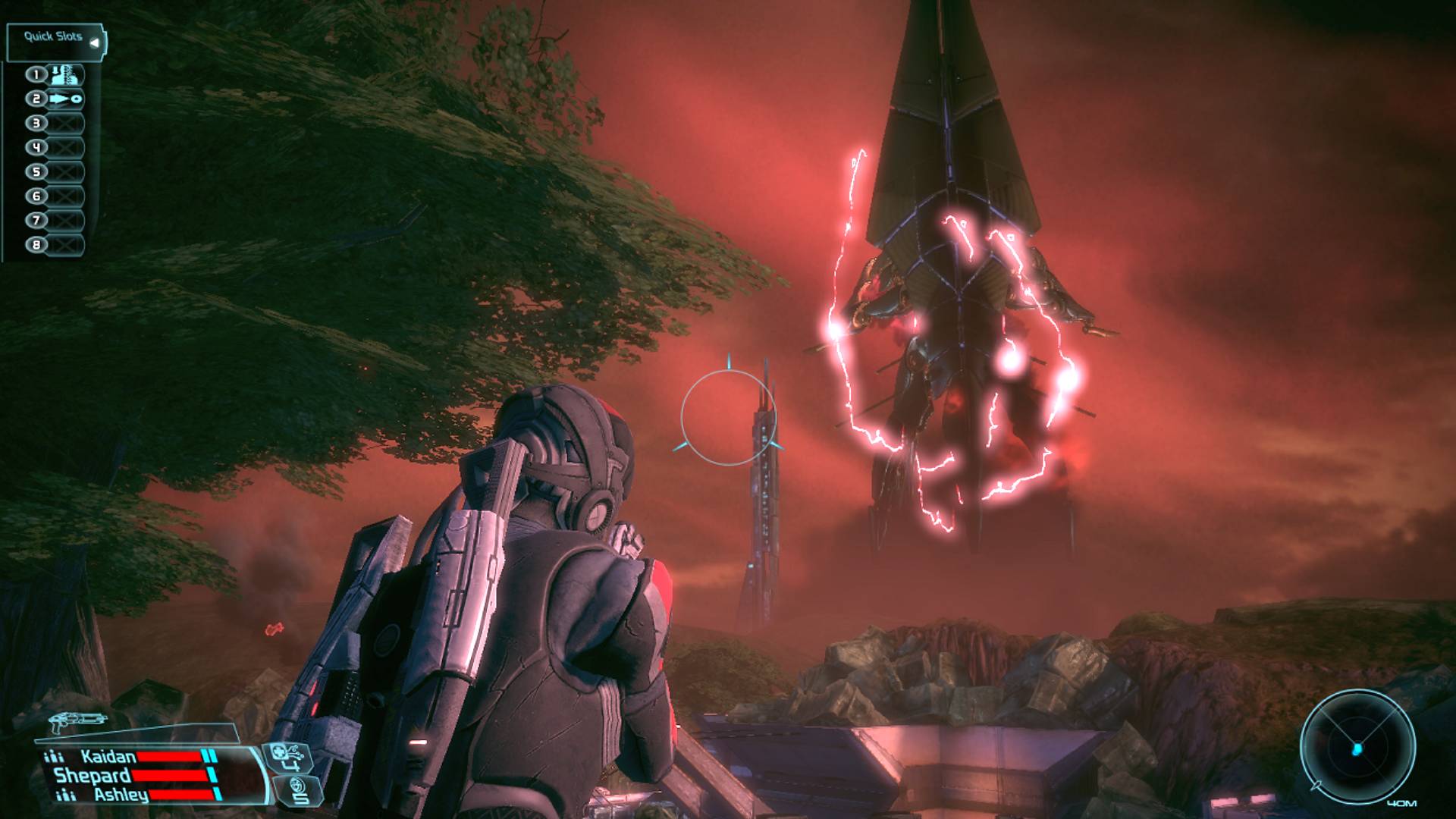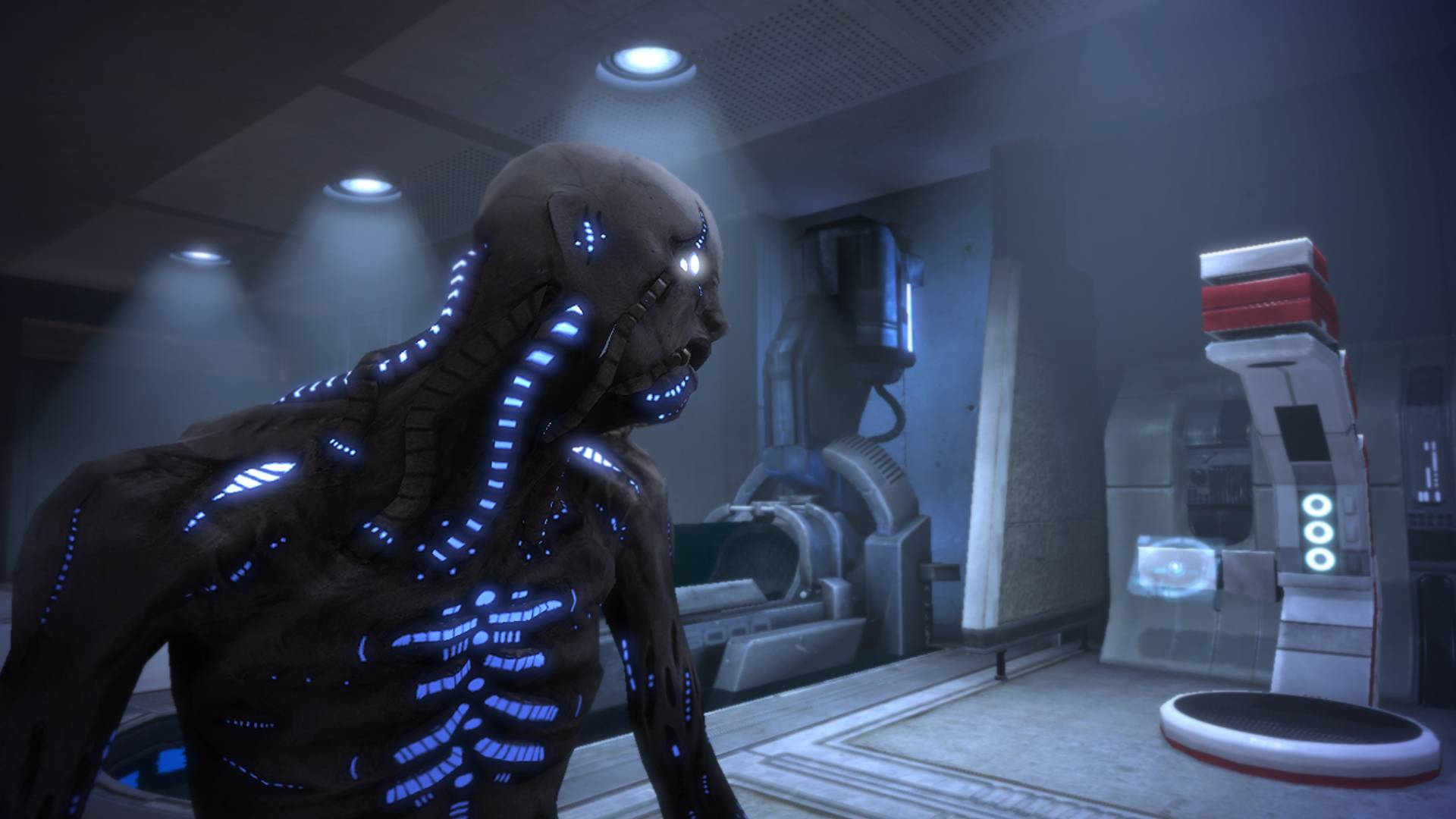How Mass Effect invented the cinematic RPG: 'Sorry J.J., but we did lens flares first'
Immediate effect

“There were moments in Knights of the Old Republic where it felt like it wasn't just puppeteered characters,” recalls Mass Effect director Casey Hudson. “There were a few moments, almost accidental, where the characters were compelling as digital actors, just on the cusp of that. So it felt like with the power that would be coming out on the next systems, we could do something special with digital acting.”
This realization – which Hudson spoke about for TRG’s comprehensive and revealing oral history of Mass Effect – has since proven to be a pivotal moment in pop culture. The Mass Effect trilogy became one of the noughties’ defining blockbuster sci-fi stories – an evolving relationship drama in which you, the player, chose which of the supporting cast got the most camera time. And later, CD Projekt Red took the formula open-world with The Witcher 3 – piggybacking Mass Effect’s model for cinematic storytelling, and in turn showing the way forward for Sony and Ubisoft as they developed Horizon Zero Dawn and Assassin’s Creed. Today, the cinematic RPG is gaming’s dominant form.
There were a few almost accidental moments, where the characters were compelling as digital actors
Casey Hudson
Yet a few years before Hudson’s lightbulb moment, nobody was comparing Bioware RPGs to movies. Baldur’s Gate 2 wasn’t in any way cinematic – rather, it was literary. The isometric perspective in which the genre had thrived throughout the 90s lent itself to the interpretive power of the imagination. In the best examples, the fuzzy sprites and painterly 2D backgrounds were mere visual aids, gesturing towards the events unfolding in-game rather than fully representing them. Planescape: Torment delivered its story in long strips of prose that took up the bottom third of the screen, animating static scenes in the mind’s eye.
It was the shift to 3D which took all of that away. At the time, as a new millennium dawned, a studio like Bioware had no real choice in the matter. Those who chose to stick with 2D or isometric tech were considered wilfully anachronistic in the wake of Quake, and punished in magazine reviews.
More than most other genres, RPGs suffered for the change. Their new 3D environments were too detailed, too magnified to leave room for the imagination. Yet they couldn’t pass for anything close to interactive cinema, either – with character performances hamstrung by clumsy, repeating animations and gawping, fishlike lip sync.
Second act

They really wanted to embrace more cinematic storytelling than anything Bioware had done
Trent Oster
Hudson, working as project director on KOTOR, then Bioware’s flagship 3D game, thought he could see a path forward. “The Mass Effect team decided they were going to lean partway into Unreal shooter-dom,” recalls Bioware co-founder Trent Oster. “They weren't going to go all the way, they still wanted to keep the strong concepts of role-playing systems, and this random number basis on how weapon effects and so on were generated. But at the same time, they really wanted to embrace more cinematic storytelling than anything Bioware had done.”
Mass Effect’s footing on the PS3 and Xbox 360, as well as its use of the brand-new Unreal Engine 3, lifted a technical ceiling for the Bioware team. But delivering on the promise of ‘digital acting’ – with the team operating as director across countless scenes of dialogue over 20-plus hours of play – was no mean feat.
Get daily insight, inspiration and deals in your inbox
Sign up for breaking news, reviews, opinion, top tech deals, and more.
“Even in KOTOR, you've got like three shots you can pick from in a conversation,” Oster says. “Player character, actor one, actor two. Whereas Mass Effect, it's like, ‘OK, how’s the camera going to move? How are we going to get everything in scene? How do we ensure the environment works in the cinematics we're shooting? How do we make 1,000s of conversations work in this?’”
There are moments in those Mass Effect games that are just hand-tweaked to perfection by individual cinematic designers. And oh, it's expensive
Trent Oster
Ultimately, Bioware spent “a whole lot of money” creating a conversation system that could partway automate the direction of scenes – ready for designers to go in and alter. “There are moments in those Mass Effect games that are just hand-tweaked to perfection by individual cinematic designers. And oh, it's expensive,” Oster says. “When I started to see technical prototypes I was like, ‘Whoa, these guys are raising the bar. It's going to cost us a lot of money to make games.’”
Lead cinematics animator Shane Welbourn felt the benefit of all that expense. “At the end, you could go through the conversation system as an animator, just hit a couple of buttons and get a choice of different ways that it would drive the animation,” he says. “I swear, so many places haven't matched that. There's a new system that Cyberpunk 2077 was using, [that’s] the closest, to me, in getting there. I think that their next game could be huge. If they keep on pushing it, they seem like they're the closest to where Bioware was back then.”
Len-tacular

The Mass Effect team’s mimicry of cinema extended to copying its artifacts. In particular, lens flare: the scattering of light across the eye of a camera. It’s a flourish that implies Mass Effect has been filmed, rather than coded – and quickly became commonplace after its release.
We just embraced the lens flares and used them in a big way across the game and it became an iconic look
Shareef Shanwany
“At the time it really wasn’t something that had been done before,” lead visual effects artist Shareef Shanawany says. “It was only supposed to be a very subtle effect, something that took the gamey look off things and made it feel more like a movie. But once we had a prototype working, we just embraced the lens flares and used them in a big way across the game and it became an iconic look. They ended up becoming one of our signature looks in Mass Effect. Sorry J.J. but we did lens flares first.”
The explosion of lens flare across the games industry after Mass Effect’s release is a matter of historical record. It’s also emblematic of how Bioware’s peers responded to the game, learning its best lessons and repurposing its innovations.
“CD Projekt Red, their whole company feels like it wants to be Bioware, in a lot of ways,” Welbourn says. “And they're doing great stuff like Cyberpunk, the Witcher series, to me they're one of the top studios right now.”
Thankfully, however, the cinematic RPG hasn’t simply supplanted its literary predecessor. Distaste for isometric games finally gave way to nostalgia, and the Kickstarter revolution of the 2010s ushered in the text-heavy likes of Pillars of Eternity and Divinity: Original Sin. The latter’s developer, Larian, is now responsible for making Baldur’s Gate 3, the first sequel in the series since Bioware’s.
In a poetic twist, Larian has spent the past few years bulking up on staff, improving its production values and zooming in close for conversations, just as Mass Effect once did. It’s proof, if it were needed, that the movie-like RPG never killed the bookish one, nor vice versa. Like the crew of the Normandy, they work together beautifully as companions.

Jeremy is TRG's features editor. He has a decade’s experience across publications like GamesRadar, PC Gamer and Edge, and has been nominated for two games media awards. Jeremy was once told off by the director of Dishonored 2 for not having played Dishonored 2, an error he has since corrected.